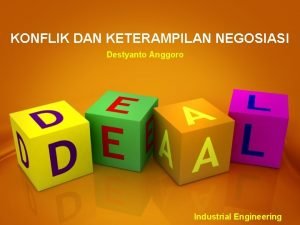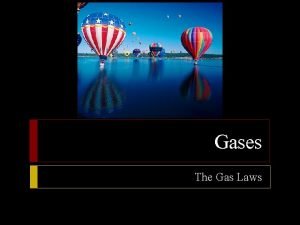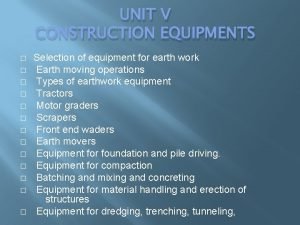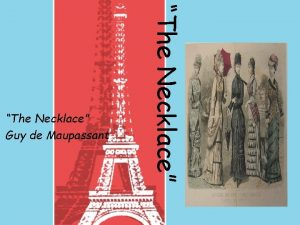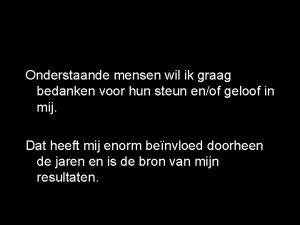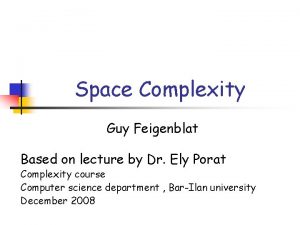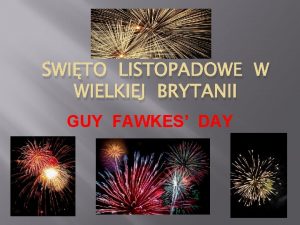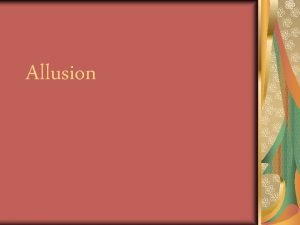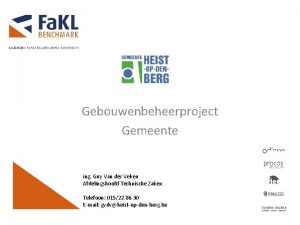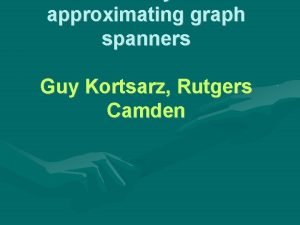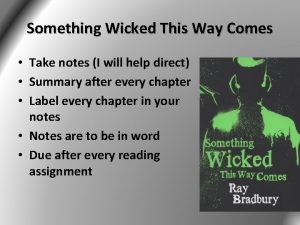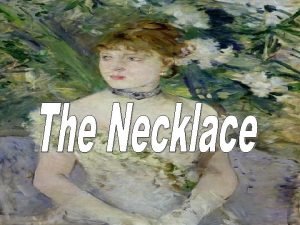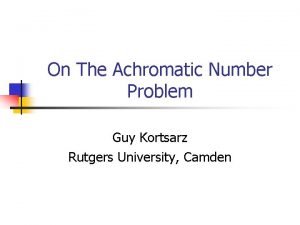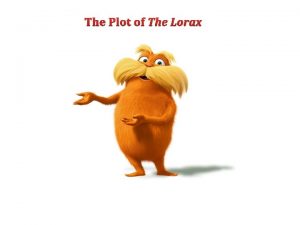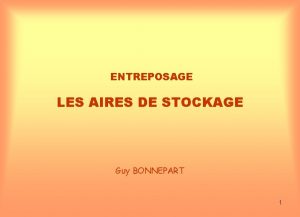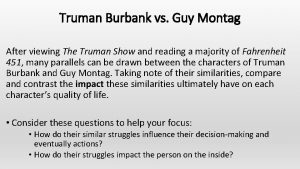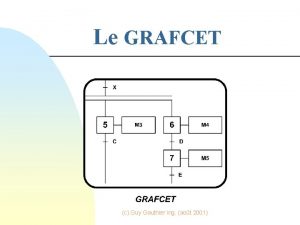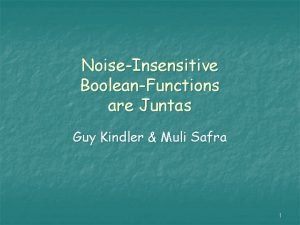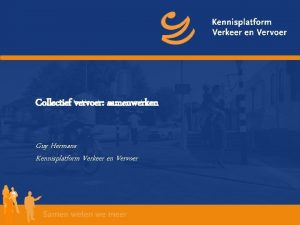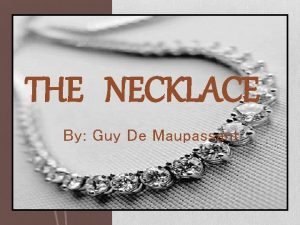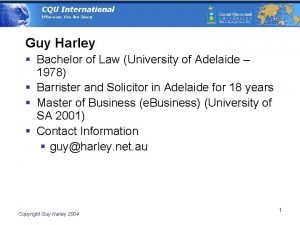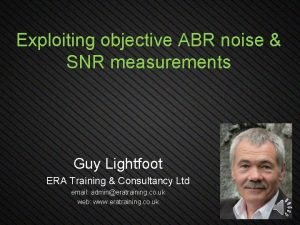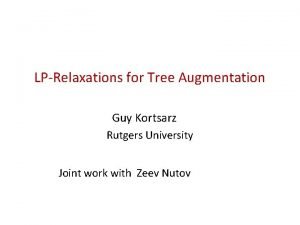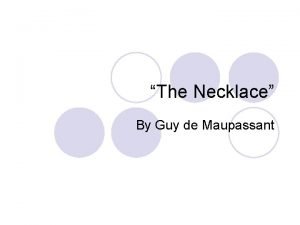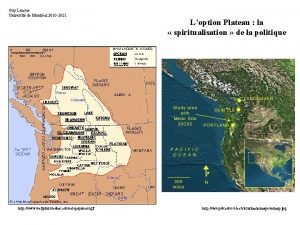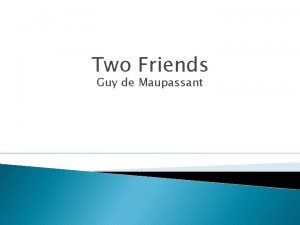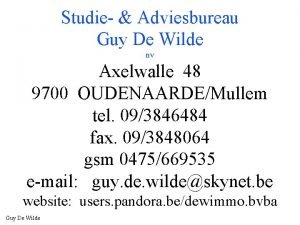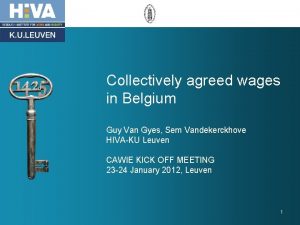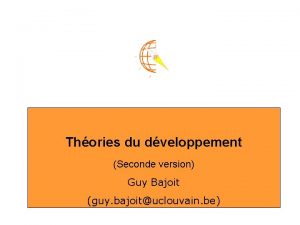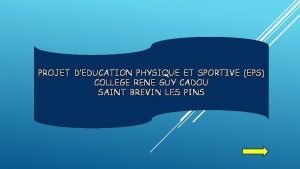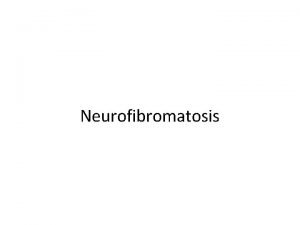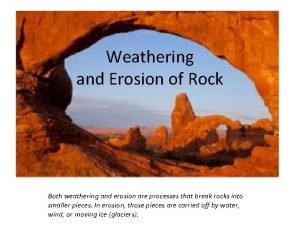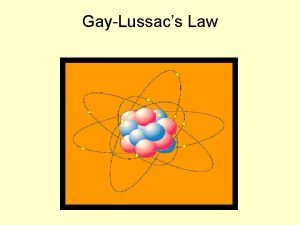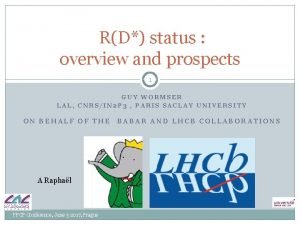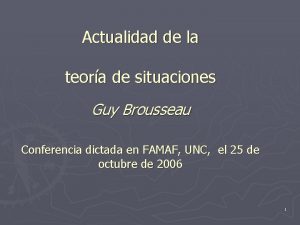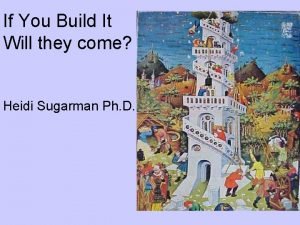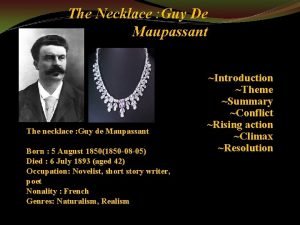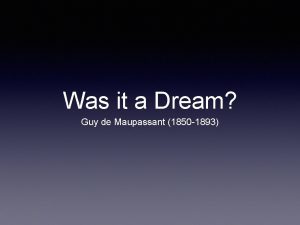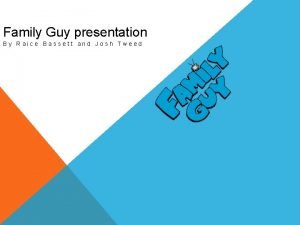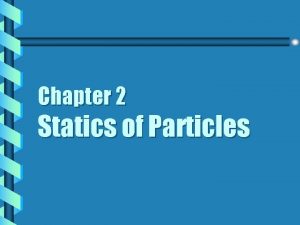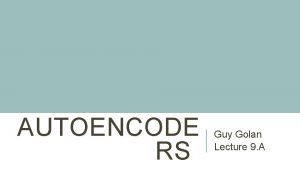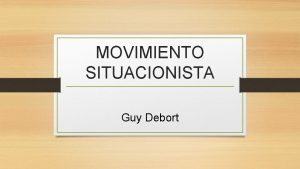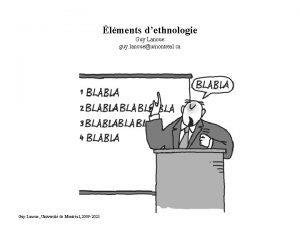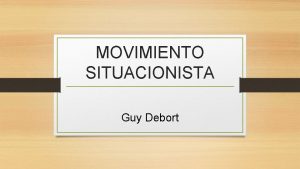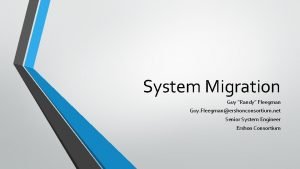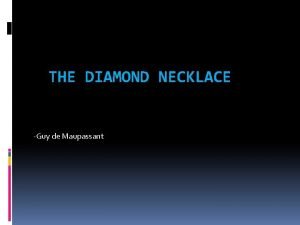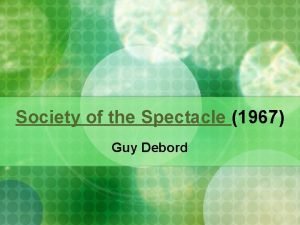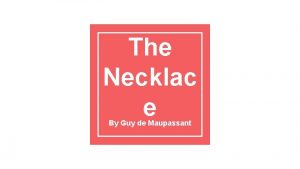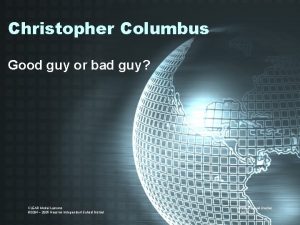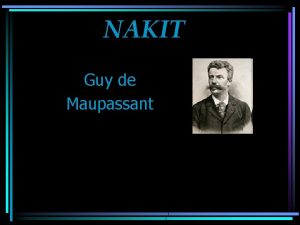AUTOENCODE RS Guy Golan Lecture 9 A AGENDA


































































- Slides: 66

AUTOENCODE RS Guy Golan Lecture 9. A

AGENDA - Unsupervised Learning (Introduction) - Autoencoder (AE) (with code) - Convolutional AE (with code) - Regularization: Sparse - Denoising AE - Stacked AE - Contractive AE

INTRODUCTION TO UNSUPERVISED LEARNING

SUPERVISED LEARNING Supervised Learning Data: (X, Y) Goal: Learn a Mapping Function f where: f(X) = Y

SUPERVISED LEARNING X 2 Examples: Classification. Decision Trees Naïve Bayes KNN SVM Perceptron Multi Layer Perceptron X 1 Classification

SUPERVISED LEARNING X 2 Examples: Regression. Linear Regression Logistic Regression X 1 Regression

SUPERVISED LEARNING VS UNSUPERVISED LEARNING 01 What happens when our labels are noisy? • Missing values. • Labeled incorrectly. 02 What happens where we don’t have labels for training at all?

SUPERVISED LEARNING VS UNSUPERVISED LEARNING Up until now we have encountered in this seminar mostly Supervised Learning problems and algorithms. Lets talk about Unsupervised Learning

UNSUPERVISED LEARNING Unsupervised Learning Data: X (no labels!) Goal: Learn the structure of the data (learn correlations between features)

UNSUPERVISED LEARNING Examples: Clustering, Compression, Feature & Representation learning, Dimensionality reduction, Generative models , etc.

PCA – PRINCIPAL COMPONENT ANALYSIS - Statistical approach for data compression and visualization - Invented by Karl Pearson in 1901 - Weakness: linear components only.

TRADITIONAL AUTOENCODER

TRADITIONAL AUTOENCODER § Unlike the PCA now we can use activation functions to achieve non-linearity. § It has been shown that an AE without activation functions achieves the PCA capacity.

USES - The autoencoder idea was a part of NN history for decades (Le. Cun et al, 1987). • - Traditionally an autoencoder is used for dimensionality reduction and feature learning. Not used for compression. -Data specific compression. -Lossy. - Recently, the connection between autoencoders and latent space modeling has brought autoencoders to the front of generative modeling, as we will see in the next lecture.

SIMPLE IDEA

SIMPLE IDEA Learning the identity function seems trivial, but with added constraints on the network (such as limiting the number of hidden neurons or regularization) we can learn information about the structure of the data. Trying to capture the distribution of the data (data specific!)

TRAINING THE AE

UNDERCOMPLETE AE VS OVERCOMPLETE AE We distinguish between two types of AE structures:

UNDERCOMPLETE AE • Hidden layer is Undercomplete if smaller than the input layer q. Compresses the input q. Compresses well only for the training dist. • Hidden nodes will be q. Good features for the training distribution. q. Bad for other types on input

OVERCOMPLETE AE • Hidden layer is Overcomplete if greater than the input layer q. No compression in hidden layer. q. Each hidden unit could copy a different input component. • No guarantee that the hidden units will extract meaningful structure. • Adding dimensions is good for training a linear classifier (XOR case example). • A higher dimension code helps model a more complex

DEEP AUTOENCODER EXAMPLE https: //cs. stanford. edu/people/karpathy/convnetjs/demo/autoencoder. html - By Andrej Karpathy

SIMPLE LATENT SPACE INTERPOLATION - KERAS Encoder

SIMPLE LATENT SPACE INTERPOLATION - KERAS Decoder

SIMPLE LATENT SPACE INTERPOLATION – KERAS CODE EXAMPLE

SIMPLE LATENT SPACE – INTERPOLATION - KERAS

CONVOLUTIONAL AE

* Input values are normalized * All of the conv layers activation functions are relu except for the last conv which is sigm CONVOLUTIONAL AE Output C 2 C 1 M. P 2 Input M. P 1 (28, 1) (28, 16 (14, 14, 8) (7, 7, 8) ) ) Conv 1 16 F @ (3, 3, 1) same M. P 1 (2, 2) same Conv 2 8 F @ (3, 3, 16) same M. P 2 (2, 2) same C 3 (7, 7, 8) Conv 3 8 F @ (3, 3, 8) same M. P 3 (4, 4, 8) M. P 3 (2, 2) same D. C 1 (4, 4, 8) D Conv 1 8 F @ (3, 3, 8) same U. S 1 (8, 8, 8) U. S 1 (2, 2) D. C 2 (8, 8, 8) D Conv 2 8 F @ (3, 3, 8) same U. S 2 (16, 8) U. S 2 (2, 2) D Conv 3 16 F @ (3, 3, 8) valid Hidde n Code Encoder D. C 3 U. S 3 (14, 16 (28, 8) ) Decoder U. S 3 (2, 2) D. C 4 (28, 1) D Conv 4 1 F @ (5, 5, 8) same

CONVOLUTIONAL AE – KERAS EXAMPLE

CONVOLUTIONAL AE – KERAS EXAMPLE RESULTS - 50 epochs. - 88% accuracy on validation set.

REGULARIZATION Motivation: - We would like to learn meaningful features without altering the code’s dimensions (Overcomplete or Undercomplete). The solution: imposing other constraints on the network.

SPARSELY REGULATED AUTOENCODERS A bad example: Activation Maps

SPARSELY REGULATED AUTOENCODERS - We want our learned features to be as sparse as possible. - With sparse features we can generalize better. = 1* + 1* + 0. 8* + 1*

SPARSELY REGULATED AUTOENCODERS

SPARSELY REGULATED AUTOENCODERS

SPARSELY REGULATED AUTOENCODERS

SPARSELY REGULATED AUTOENCODERS

SPARSELY REGULATED AUTOENCODERS

DENOISING AUTOENCODERS Intuition: - We still aim to encode the input and to NOT mimic the identity function. - We try to undo the effect of corruption process stochastically applied to the input. A more robust model Encoder Noisy Input Decoder Latent space representation Denoised Input

DENOISING AUTOENCODERS Use Case: - Extract robust representation for a NN classifier. Encoder Noisy Input Latent space representation

DENOISING AUTOENCODERS

DENOISING AUTOENCODERS

DENOISING AUTOENCODERS 0 0 0

DENOISING AUTOENCODERS - PROCESS Apply Noise

DENOISING AUTOENCODERS - PROCESS Encode And Decode DAE

DENOISING AUTOENCODERS - PROCESS DAE

DENOISING AUTOENCODERS - PROCESS Compare

DENOISING AUTOENCODER S

DENOISING CONVOLUTIONAL AE – KERAS

DENOISING CONVOLUTIONAL AE – KERAS - 50 epochs. - Noise factor 0. 5 - 92% accuracy on validation set.

STACKED AE - Motivation: q We want to harness the feature extraction quality of a AE for our advantage. q For example: we can build a deep supervised classifier where it’s input is the output of a SAE. q The benefit: our deep model’s W are not randomly initialized but are rather “smartly selected” q. Also using this unsupervised technique lets us have a larger unlabeled dataset.

STACKED AE - Building a SAE consists of two phases: 1. Train each AE layer one after the other. 2. Connect any classifier (SVM / FC NN layer etc. )

STACKED AE SAE Classifier

STACKED AE – TRAIN PROCESS First Layer Training (AE 1)

STACKED AE – TRAIN PROCESS Second Layer Training (AE 2)

STACKED AE – TRAIN PROCESS Add any classifier Classifier Output

CONTRACTIVE AUTOENCODERS

CONTRACTIVE AUTOENCODERS - Idea: We wish to extract features that only reflect variations observed in the training set. We would like to be invariant to the other variations. - Points close to each other in the input space maintain that property in the latent space.

CONTRACTIVE AUTOENCODERS

CONTRACTIVE AUTOENCODERS

CONTRACTIVE AUTOENCODERS Combination would be an encoder that keeps only good information.

CONTRACTIVE AUTOENCODERS Encoder doesn’t need to be sensitive to this variation (not observed in training data) Encoder must be sensitive to this variation to reconstruct well

WHICH AUTOENCODER? - DAE make the reconstruction function resist small, finite sized perturbations in input. - CAE make the feature encoding function resist small, infinitesimal perturbations in input. - Both denoising AE and contractive AE perform well!

WHICH AUTOENCODER? q. Advantage of DAE: simpler to implement -Requires adding one or two lines of code to regular AE. -No need to compute Jacobian of hidden layer. q. Advantage of CAE: gradient is deterministic. - might be more stable than DAE, which uses a sampled gradient. - one less hyper-parameter to tune (noise-factor)

SUMMARY

REFERENCES 1. 2. 3. 4. 5. 6. 7. https: //arxiv. org/pdf/1206. 5538. pdf http: //www. deeplearningbook. org/contents/autoencoders. html http: //deeplearning. net/tutorial/d. A. html http: //ufldl. stanford. edu/tutorial/unsupervised/Autoencoders/ http: //ufldl. stanford. edu/wiki/index. php/Stacked_Autoencoders http: //www. jmlr. org/papers/volume 11/vincent 10 a. pdf https: //codeburst. io/deep-learning-types-and-autoencoders-a 40 ee 6754663

QUESTIONS?
 Taktik good guy bad guy
Taktik good guy bad guy 01:640:244 lecture notes - lecture 15: plat, idah, farad
01:640:244 lecture notes - lecture 15: plat, idah, farad Agenda sistemica y agenda institucional
Agenda sistemica y agenda institucional Gay lussac law formula
Gay lussac law formula Le lieu de la ficelle
Le lieu de la ficelle Guy derrick crane
Guy derrick crane The necklace by guy de maupassant symbolism
The necklace by guy de maupassant symbolism Optic strategy visual communication guy
Optic strategy visual communication guy Kris dumont
Kris dumont Space weather family guy
Space weather family guy Guy fakwes day
Guy fakwes day Family guy allusions
Family guy allusions Guy van der veken
Guy van der veken Guy kortsarz
Guy kortsarz Family guy moses
Family guy moses Something wicked this way comes chapter summary
Something wicked this way comes chapter summary Symbolism in the necklace
Symbolism in the necklace Guy kortsarz
Guy kortsarz The lorax story map
The lorax story map Prince charles family guy
Prince charles family guy Guy stocker
Guy stocker Family guy burbank
Family guy burbank Maupassant realisme
Maupassant realisme Guy hewson
Guy hewson Debbie guy
Debbie guy Grafcet wagonnet
Grafcet wagonnet Guy kindler
Guy kindler Regiotaxi veenweide
Regiotaxi veenweide Fire clown
Fire clown The necklace by guy de maupassant
The necklace by guy de maupassant Guy harley solicitor adelaide
Guy harley solicitor adelaide Guy lightfoot
Guy lightfoot Kortsarz
Kortsarz Guy spriggs
Guy spriggs What is the setting of the necklace by guy de maupassant
What is the setting of the necklace by guy de maupassant Guy lanoue
Guy lanoue Two friends by guy de maupassant
Two friends by guy de maupassant Guy de wilde
Guy de wilde Guy van gyes
Guy van gyes Kidpix4
Kidpix4 Guy bajoit
Guy bajoit Dr adam fox allergy
Dr adam fox allergy College rene guy cadou st brevin
College rene guy cadou st brevin Nih
Nih Family guy satire analysis
Family guy satire analysis Bill nye the science guy weathering and erosion
Bill nye the science guy weathering and erosion Standing on a ladder i slipped and broke a window
Standing on a ladder i slipped and broke a window Gay lussac's law
Gay lussac's law Ben guy cambridge
Ben guy cambridge Revision pneus gundershoffen
Revision pneus gundershoffen Guy wormser
Guy wormser Guy brousseau
Guy brousseau Taking nap
Taking nap Moral of the necklace
Moral of the necklace Guy widdershoven
Guy widdershoven Montag's internal conflict
Montag's internal conflict Ordinary guy movie
Ordinary guy movie What is a dream by guy de maupassant
What is a dream by guy de maupassant Joshua family guy
Joshua family guy Frre guy
Frre guy Remember remember the fifth of september
Remember remember the fifth of september We got the computer guy … the new software for us.
We got the computer guy … the new software for us. The tension in the guy wire is 2500 n
The tension in the guy wire is 2500 n The lady or the tiger protagonist and antagonist
The lady or the tiger protagonist and antagonist Guy pinsonnault
Guy pinsonnault Pps guy
Pps guy Guy vandenbosch
Guy vandenbosch
